This article will change the way you look at frogs forever! Who knew that frogs could be striking and colourful?
Facts about Frogs
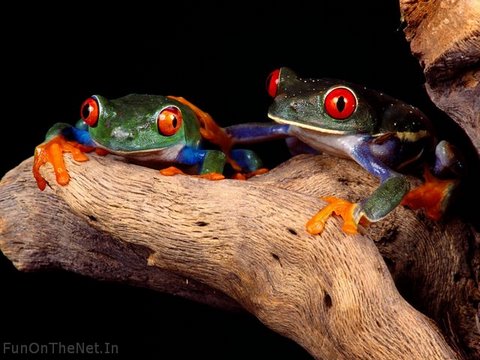
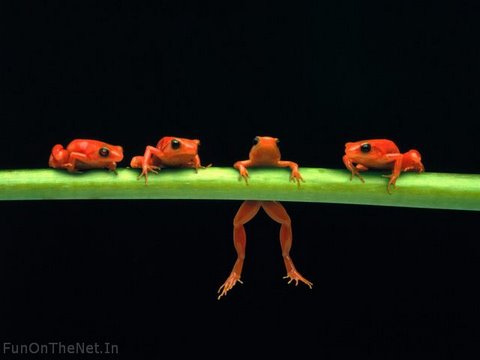
Many
frogs, especially those that live in water, have webbed toes. The
degree to which the toes are webbed is directly proportional to the
amount of time the species lives in the water.

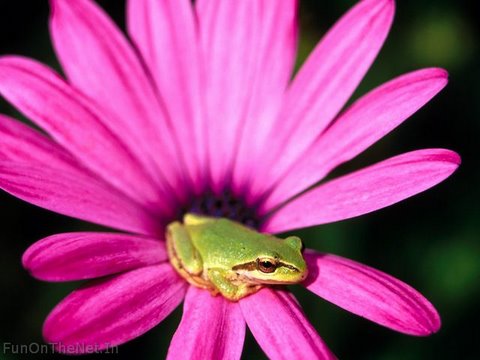
Frogs are generally recognized as exceptional jumpers, and the best jumper of all vertebrates. The Australian rocket frog, Litoria nasuta, can leap over 50 times their body length (5.5 cm), resulting in jumps of over 2 meters.
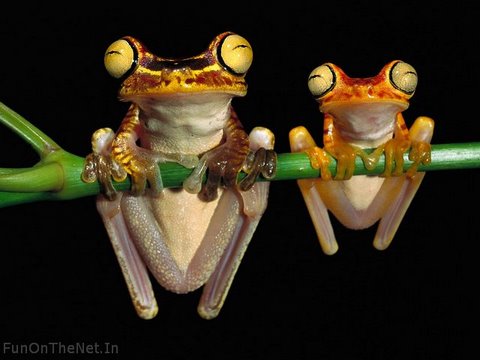
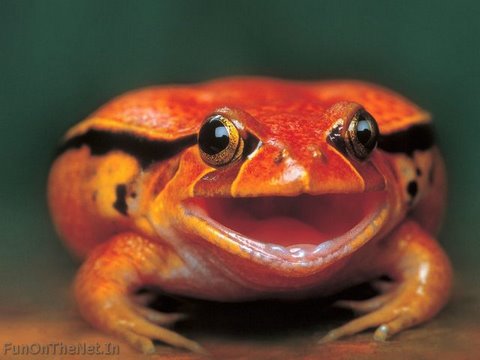
Many
frogs are able to absorb water and oxygen directly through the skin,
especially around the pelvic area. However, the permeability of a frog's
skin can also result in water loss. Some tree frogs reduce water loss
with a waterproof layer of skin. Others have adapted behaviours to
conserve water, including engaging in nocturnal activity and resting in a water-conserving position.

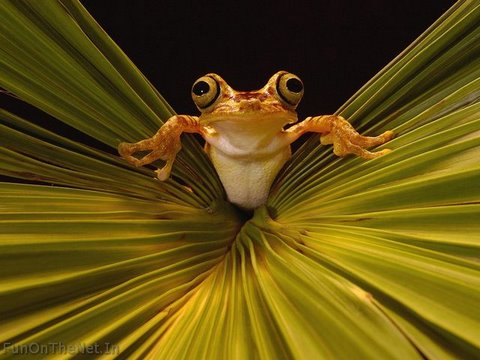
Camouflage
is a common defensive mechanism in frogs. Most camouflaged frogs are
nocturnal, which adds to their ability to hide. Nocturnal frogs usually
find the ideal camouflaged position during the day to sleep. Some frogs
have the ability to change colour, but this is usually restricted to
shades of one or two colours.
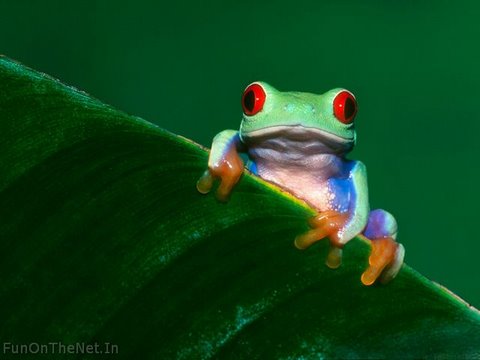
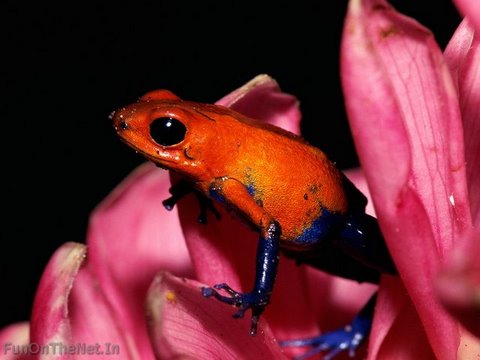
Many
frogs contain mild toxins that make them unpalatable to potential
predators. For example, all toads have large poison glands—the parotoid
glands—located behind the eyes on the top of the head. Some frogs, such
as some poison dart frogs, are especially toxic. The chemical makeup of
toxins in frogs varies from irritants to hallucinogens, convulsants, nerve poisons, and vasoconstrictors.
Many predators of frogs have adapted to tolerate high levels of these
poisons. Others, including humans, may be severely affected.
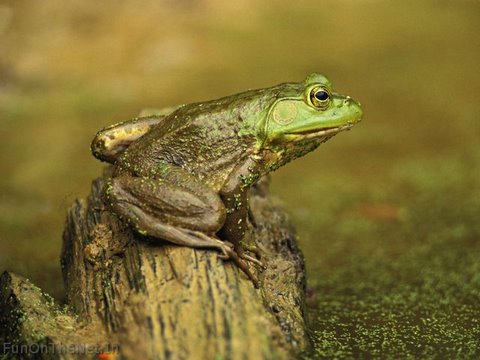
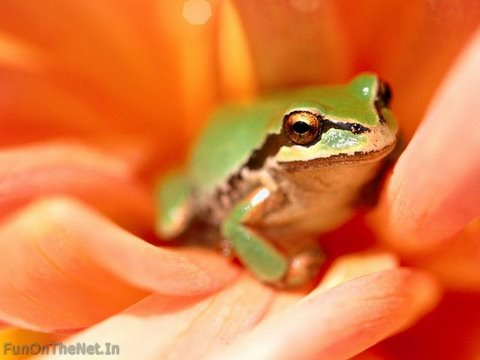
The
skin of a frog is permeable to oxygen and carbon dioxide, as well as to
water. There are a number of blood vessels near the surface of the
skin. When a frog is underwater, oxygen is transmitted through the skin
directly into the bloodstream. On land, adult frogs use their lungs to
breathe. Frogs breathe by taking air in through the nostrils (which
often have valves which close when the frog is submerged), causing the
throat to puff out, then compressing the floor of the mouth, which
forces the air into the lungs. In August 2007 an aquatic frog named Barbourula kalimantanensis was discovered in a remote part of Indonesia. The Bornean Flat-headed Frog (B. kalimantanensis) is the first species of frog known to science without lungs.

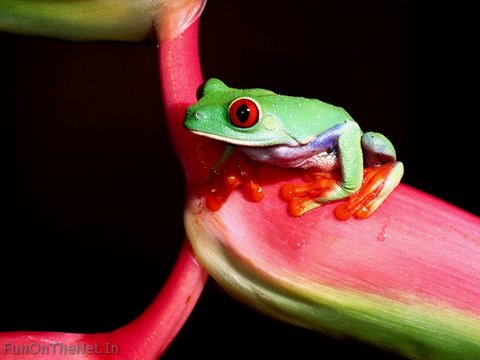
Although
care of offspring is poorly understood in frogs, it is estimated that
up to 20% of amphibian species may care for their young in one way or
another, and there is a great diversity of parental behaviours. Some
species of poison dart frog lay eggs on the forest floor and protect
them, guarding the eggs from predation and keeping them moist. The frog
will urinate on them if they become too dry. After hatching, a parent
(the sex depends upon the species) will move them, on its back, to a
water-holding bromeliad. The parent
then feeds them by laying unfertilized eggs in the bromeliad until the
young have metamorphosed. Other frogs carry the eggs and tadpoles on
their hind legs or back.
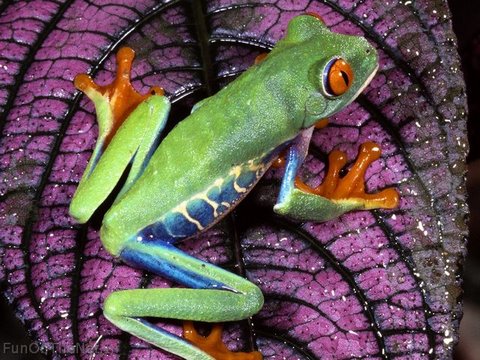

Some
frog calls are so loud, they can be heard up to a mile away. The call
of a frog is unique to its species. Frogs call by passing air through
the larynx in the throat. In most calling frogs, the sound is amplified
by one or more vocal sacs, membranes of skin under the throat or on the
corner of the mouth that distend during the amplification of the call.
The field of neuroethology studies the neurocircuitry that underlies
frog audition.
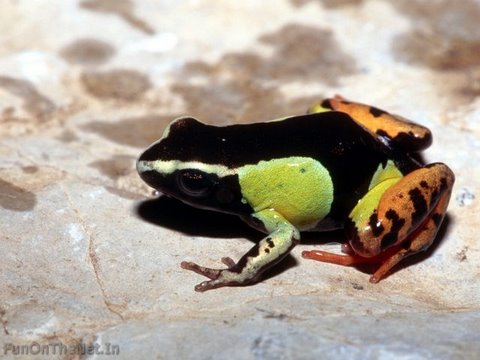
No comments:
Post a Comment